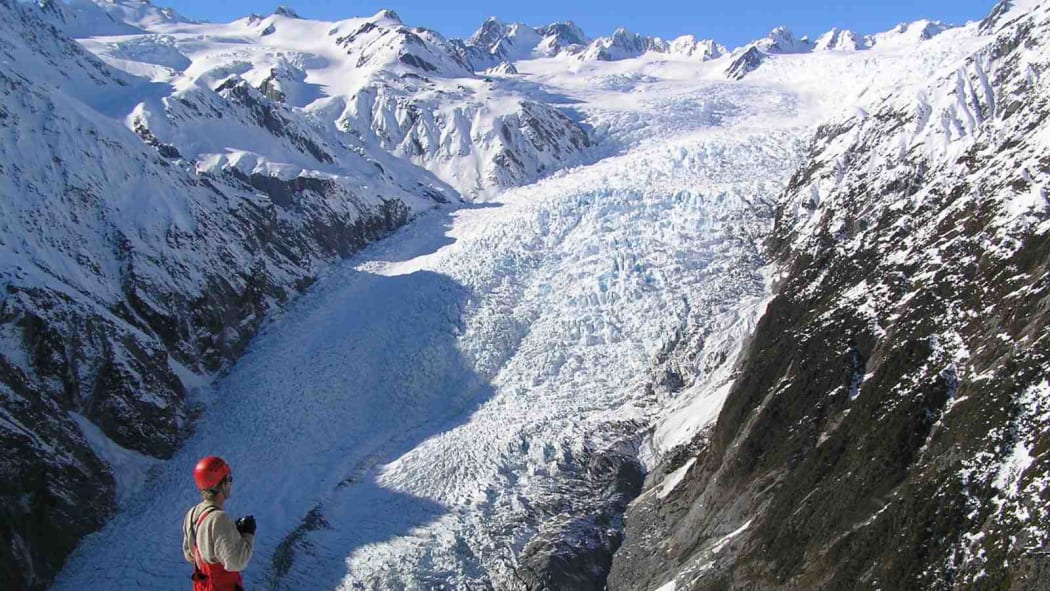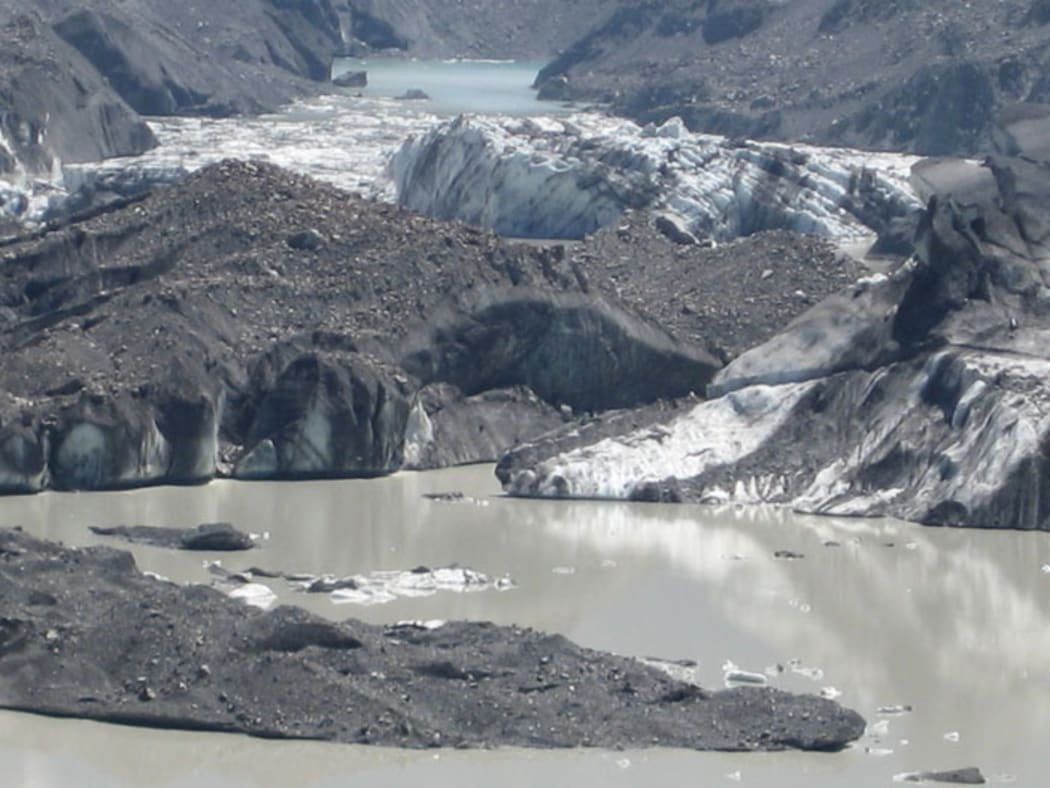Around the world, from Greenland to Antarctica, glaciers are melting and retreating. The cause? Rising temperatures.

The Franz Josef Glacier is a steep, fast-moving glacier on the West Coast that has retreated, advanced and then retreated again over the last century. Photo: Andrew Mackintosh / Victoria University
But between 1983 and 2008 some New Zealand glaciers bucked the trend – they were getting thicker and longer.
Franz Josef Glacier on the West Coast was a stand-out – it regained half the ground it had lost in the previous seven decades. This was good news for tourists who flocked to see the glacier, but it left glaciologists from NIWA and Victoria University of Wellington wondering. What was going on? What was causing some glaciers – but not others – to grow?
The answer, says Andrew Mackintosh from Victoria University’s Antarctic Research Centre, was a period of cooler temperatures around New Zealand and the Tasman Sea.
This cluster of cool years was marked by southerly winds which Mackintosh says started in 1991 after the eruption of Mount Pinatubo.
These lower temperatures were enough to slow the melting of some glaciers. They also ensured that more precipitation in the headwaters of the glaciers arrived as snow, rather than as rain – and snow is the raw material for glacial ice.
Previously, researchers had thought that increased precipitation alone was enough to cause glaciers to advance, but this study shows that it is only part of the answer.
Glaciers are challenging to study. They change slowly, the changes are subtle, and the glaciers are often in remote alpine areas and hard to reach. The new study was the result of 10 years of data collection on West Coast glaciers by Brian Anderson, and a 30-year record of aerial photos of New Zealand glaciers from NIWA’s end of summer snowline programme, as well as some sophisticated physics and computer modelling.
Fox Glacier retreated by around 300m between January 2014 and January 2015, and footage of the event was captured on time-lapse cameras by Brian Anderson.
Brian also recorded this time-lapse of Franz Josef Glacier flowing down from the Southern Alps.
Since 2008 all the glaciers in the study have been shrinking, due to warmer temperatures overall, but Mackintosh says New Zealand glaciers are very sensitive to small changes in temperature. Although the Franz Josef Glacier has retreated by 1.5km since 2008, Anderson has reported that this year’s cool wet summer is already resulting in a small bulge at the glacier’s toe.
The Fox and Franz Josef glaciers are short, steep, fast-flowing glaciers that descend from the Southern Alps to low altitudes on the West Coast, where they melt very quickly. Their behaviour contrasts with the Tasman Glacier on the eastern side of the Alps, which is an enormous low-angle glacier, which now ends in a large melt water lake.

Aerial view of New Zealand's largest glacier, the Tasman Glacier. Photo: CC BY-NC-ND 2.0 aa440/Flickr
The study, which is part of NIWA’s Climate Present and Past project looked at just 50-or-so of New Zealand’s more well-studied glaciers, out of a total of more than 3000.
The study was led by Andrew Mackintosh and Brian Anderson from Victoria University of Wellington and Andrew Lorrey from NIWA. It was published in the journal Nature Communications.
In 2012 Veronika Meduna joined Brian Anderson on the Franz Josef Glacier as he carried out field work that formed part of this study, and discussed the fate of New Zealand glaciers with Brian and Andrew..

Tasman Glacier now terminates in a large melt water lake. Photo: CC BY-SA 2.0 Mrs Gemstone / Flickr

